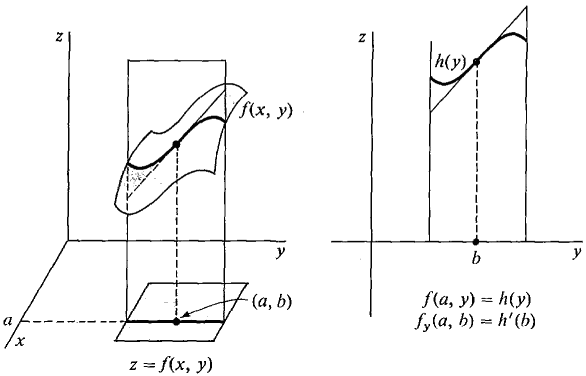| The ebook Elementary Calculus is based on material originally written by H.J. Keisler. For more information please read the copyright pages. |

|

Home  Partial Differentiation Partial Differentiation  Partial Derivates Partial Derivates  Partial Derivatives Partial Derivatives |
|






|
|
Partial Derivatives
11.3 PARTIAL DERIVATIVES Partial derivatives are used to study the rates of change of functions of two or more variables. In general the rate of change of z = f(x, y) will depend both on the rate of change of x and the rate of change of y. Partial derivatives deal with the simplest case, where only one of the independent variables is changing and the other is held constant. Given a function z = f(x, y), if we hold y fixed at some constant value b we obtain a function g(x) = f(x,b) of x only. Geometrically the curve z = g(x) is the intersection of the surface z = f(x, y) with the vertical plane y = b. The rate of change of z with respect to x with y held constant is the slope of the curve z = g(x). This slope is called the partial derivative of f(x, y) with respect to x (Figure 11.3.1(a)). There is also a partial derivative with respect to y (Figure 11.3. 1(b)).
Figure 11.3.1(a): Partial Derivatives
Figure 11.3.1 (b)
|
|
Home  Partial Differentiation Partial Differentiation  Partial Derivates Partial Derivates  Partial Derivatives Partial Derivatives |
|
Last Update: 2006-11-05



